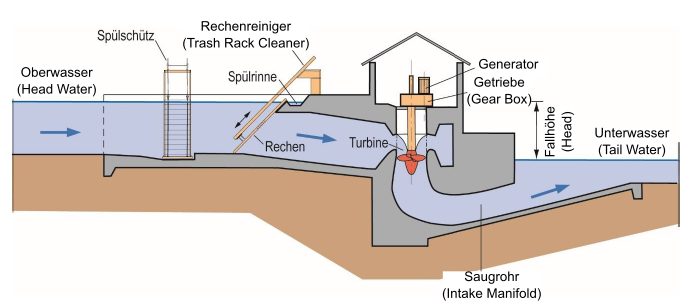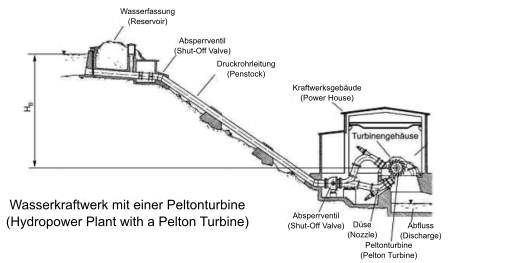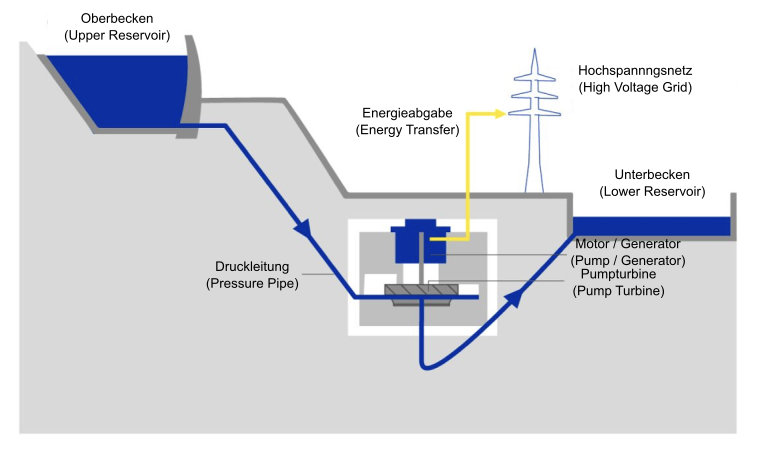
Technical overview of hydropower plants
Hydropower plants have a wide range of installed capacity, ranging from a few kilowatts to 100 megawatts. They can be divided into the following types: Run-of-river power plants, storage power plants, pumped storage power plants, ocean current power plants and wave power plants. The type of hydropower plant that can be built depends primarily on the terrain and the surrounding area.
Run-of-river power plants
Run-of-river power plants are built on rivers or canals and use their flow to generate electricity. They are characterized by a continuous flow and a low head (up to 15 m) with seasonal fluctuations in the volume of water. The plants are often built in conjunction with controllable turbines and screen cleaners in order to increase their economic efficiency. As they cannot dam up large volumes of water and most of them have a legally prescribed fish ladder, so that they are environmentally friendly. In the Alpine region, 32 % of all hydropower plants are run-of-river plants.

Construction of a run-of-river power plant
Source: "Preparation and monitoring of a progress report in accordance with Section 97 of the Renewable Energy Sources Act. Sub-project II d: Hydropower. Interim work.", Fichtner Water & Transportation GmbH, May 2018
Storage power plants
Storage power plants with natural inflow utilize the high gradient and storage capacity of dams. In such a power plant, the turbines are located at the foot of the dam. The number of such power plants in the Alpine region amounts to 38% of all plants. A distinction can be made between medium-pressure plants (head: < 50m) and high-pressure plants (head: > 50m).

Construction of a storage power plant
Pumped storage power plants
Pumped storage power plants utilize the high gradient and storage capacity of lakes. They are not only used to generate energy, but also to store it. If there is an oversupply of electricity, water is pumped to a higher geodetic level and stored there. If electricity is needed in the grid, the water can be fed into the turbine. With these power plants, only the proportion of electricity generated from their natural inflow can be considered sustainably renewable. Such plants account for 29 % of all hydropower plants in the Alpine region.
